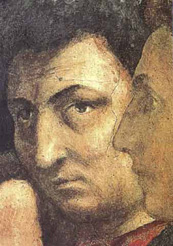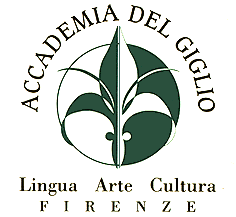 Approaching an artist such as Masaccio (1401-1428) means discovering undoubtedly one of the greatest painters of the 15th Century in Italy. Masaccio was immediately considered a supreme master since during all the Renaissance period most of the artists used to admire his fine works as ideal examples to learn the basic precepts and rules in the art of painting. Masaccio was actually the first painter who reflected in his works the Humanist philosophy by transforming the idealized Gothic conception of painting into a deeper and more realistic way of representing the reality of the world, closer to mankind. He is also considered the first painter who adopted the geometrical perspective with its vanishing point.
Approaching an artist such as Masaccio (1401-1428) means discovering undoubtedly one of the greatest painters of the 15th Century in Italy. Masaccio was immediately considered a supreme master since during all the Renaissance period most of the artists used to admire his fine works as ideal examples to learn the basic precepts and rules in the art of painting. Masaccio was actually the first painter who reflected in his works the Humanist philosophy by transforming the idealized Gothic conception of painting into a deeper and more realistic way of representing the reality of the world, closer to mankind. He is also considered the first painter who adopted the geometrical perspective with its vanishing point.
Despite his short life (he died when he was 26), he brought a new revolution in painting, moving away from the elaborated and refined ornamentations of the Gothic style (which you can find for example in Gentile da Fabriano). According to Vasari Masaccio was also extremely interested in the study of human anatomy. Needless to say the he was also the first painter who represented nude figures (Adam and Eve).
Of his personality we know that he was a very generous but also a messy and clumsy man. He often seemed absent-minded or careless: he paid very little attention not only to himself, but also to other people. He even had the reputation of forgetting to collect money from his debtors, except when he was broke. Owing to his character he was called “Masaccio”, instead of his real name “Tommmaso”, since “Maso” is an abbreviation for “Tommaso” and the ending “-accio” in Tuscany means messy, big and clumsy.
One of his most famous works is the “Trinità” in Santa Maria Novella Church, on the left wall inside the church, where the Virgin and St. John the Evangelist are contemplating the crucified Christ. Here, as well as in many other of his paintings, it is possible to appreciate the perfect use of perspective, following Brunelleschi’s rules. Vasari wrote about this work: “…the most beautiful thing there besides the figures is a barrel vault represented in perspective, and divided into squares full of bosses, which gradually diminish so realistically that the building seems hollowed in the wallbout this masterpiece”. Reportedly, Vasari was so keen on Masaccio’s masterpieces that he once told Michelangelo who was examining a work by Masaccio: “praised it greatly”.
Masaccio was also commissioned to finish the frescoes in Santa Maria del Carmine, in the Brancacci Chapel: they had been begun by Masolino who died, leaving them unfinished. His progress was so great in painting and his frescoes were so impressed that Vasari, writing about them, said: “In this same picture he showed his knowledge of foreshortening a view seen from below in a truly marvellous manner, and in the Apostle’s feet, how he has overcome a difficulty and shaken off the old rude manner, which, as I have said, made all the figures stand on the tips of their toes. This method lasted until his day without anyone correcting it, and he alone and first of all brought in the good style of to-day”.







Je suis un grand fan de Masaccio, mais aussi de Mantegna et de Giovane Bellini …
Merci pour ton commentaire. Moi aussi j’aime bien Mantegna et j’écrirai quelque chose à propos de lui…
à bientôt!